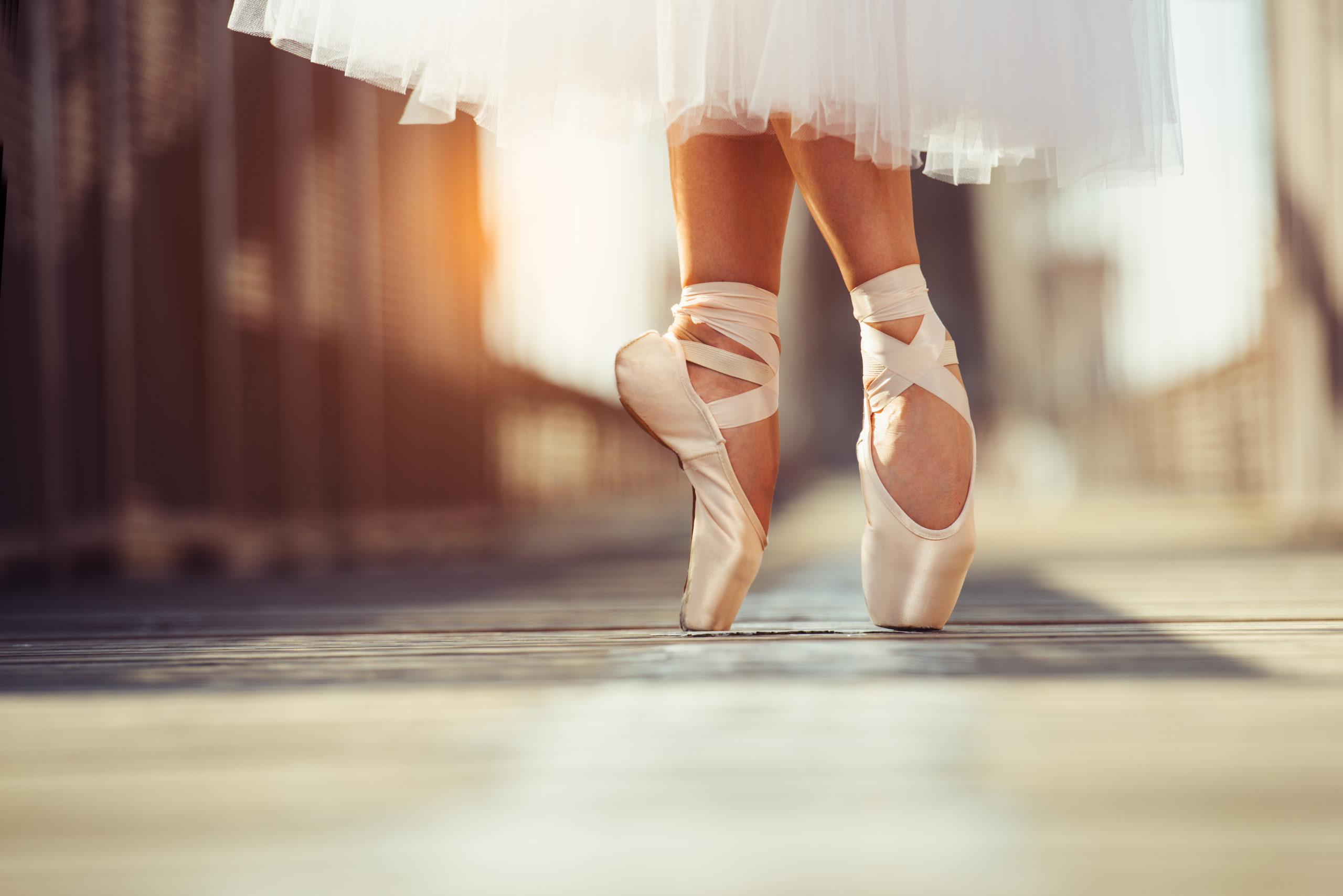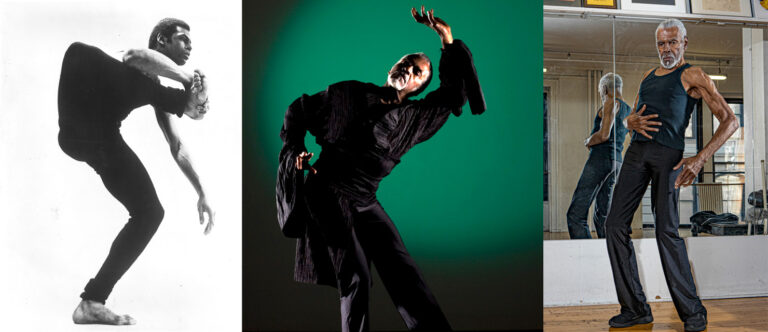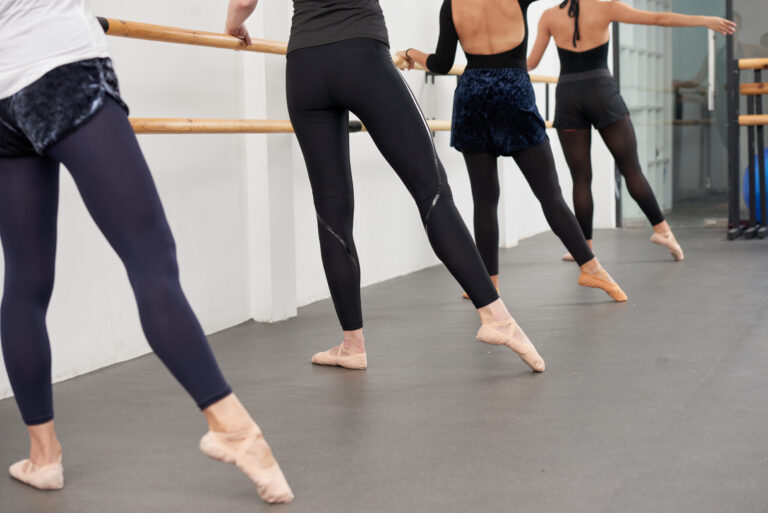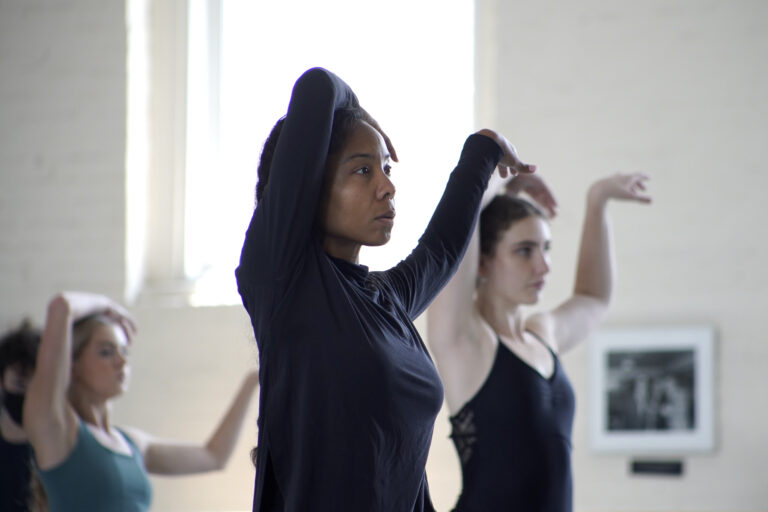
Wearing ballet slippers with satin ribbons attached, young girls practice relevé facing the barre, while Martha Goodman of Atlanta Ballet’s Centre for Dance Education makes adjustments. She sees that each child has proper placement before moving on to the next exercise. “Everything should be clean, neat and correct,” she says. Students must complete a full year of this detailed work before they receive their first pair of pointe shoes.
To ensure aspiring ballerinas are ready for pointe, many schools require students to take pre-pointe—a class separate from regular ballet technique. The curriculum allows teachers ample time to help students build the strength and alignment necessary for pointe work. It also helps them assess readiness, which lessens the risk of injury once students are in their shoes. “We work slowly with our kids so they don’t develop bad habits,” says Pacific Northwest Ballet School’s Dane Holman. “Pre-pointe gives us some extra time to do things we don’t always have the time for in technique class.”
Pre-Pointe Curriculum
Atlanta Ballet’s 45-minute pre-pointe class is held once a week after technique. The students, typically ages 10–12, are those whom teachers expect to put on pointe the following year. To qualify, they must demonstrate solid technique and attend ballet at least three days a week.
Much of Goodman’s goal is helping students articulate quarter, half, three-quarter and full pointe. This strengthens the metatarsals and stabilizes the ankles so dancers relevé straight up and down in their shoes, instead of moving through a dangerous sickled or winged foot. Facing the barre, students roll through parallel and turned-out first, one foot at a time. “They should be right over the center of the foot with knees over toes. And their spines should be long, with hips and shoulders properly placed,” she says. Relevés with forced-arch position follow, as well as échappés. Here, students should push off from a clean fifth position and show control of their turnout.
At PNB, Holman uses steps often done during beginner pointe, like a progression of piqués at the barre stepping to fifth on demi-pointe and then to one foot with the other in cou-de-pied derrière. She tries to catch habits that the shoes may cause in the future. “When the students get their pointe shoes, they tend to bend their knees during piqué and relevé,” she says. In center, Holman breaks down piqué turns, pas de bourrée en tournant and chaîné turns. Starting in sous-sus with fingertips on their shoulders, students look toward the mirror and chaîné half turn, half turn, plié relevé. This gives her an opportunity to identify problems before students advance.
Stretching and Strengthening
Pre-pointe isn’t just about ballet technique. Class at Marin Dance Theatre in San Rafael, California, includes Thera-Band exercises, like pointing and flexing the feet in parallel and turnout. Students work on flexibility by drumming their toes (lifting the toes off the floor and lowering them one at a time), and they do abdominal work to strengthen their cores.
At the beginning of the year, MDT students have private Pilates sessions for assessment. They’re then matched with others who have similar weaknesses and take a class once a week, in addition to pre-pointe. “Some groups need to work on rotation, strength in the foot or core strength,” says Young Dancer Division director Vicki-Marie Bassing. “The Pilates instructor will work on their specific areas for a full year before they get their shoes.”
A doctor from St. Francis Memorial Hospital’s Center for Sports Medicine in San Francisco visits MDT once every few months to assess pointe candidates. “She will evaluate their readiness and see if there are conditions with their feet that might be a problem,” says Bassing. Though she acknowledges “there’s a glamour to getting your shoes and a rush to do it,” she isn’t hesitant to hold a dancer back who isn’t ready—sending her to additional Pilates classes or requiring her to repeat pre-pointe. Making sure she is strong is more important than rushing her into the shoes.
| Is She Ready for Pointe?
Vicki-Marie Bassing of Marin Dance Theatre assesses students’ strength and ability with these exercises. Core strength: Ask students to plié and grand plié in center. The ribs should be over the hips, and they should be strong through their abdominals, ankles and feet. Rotation: Give a slow tendu combination. Can the student sustain turnout from the hip without torquing or compensating? Alignment: Relevé exercises in first position check the ability to maintain proper placement. Balance: In center, have students sous-sus and dégagé the back leg side, so it closes in front. Have them continue walking forward on demi-pointe, crossing from fifth to fifth. This also tests strength and placement throughout the core and legs. |




